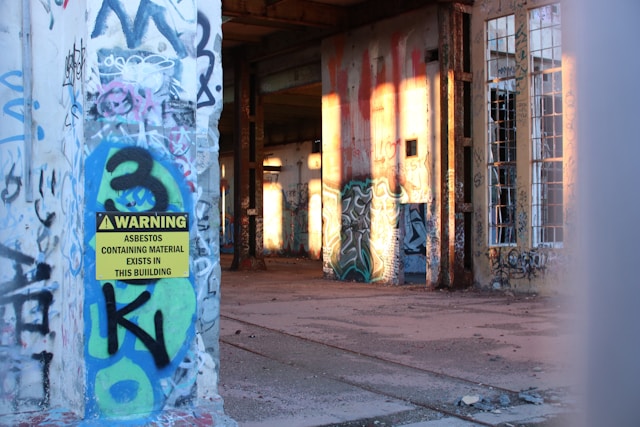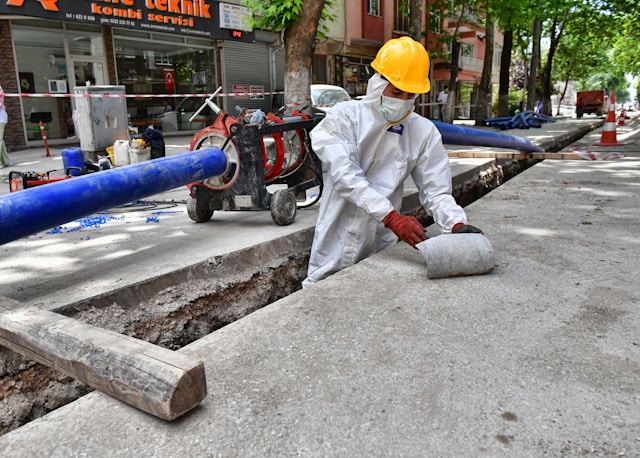Asbestos, once used widely in construction for its fireproofing properties, is now known to be dangerous when disturbed. Exposure to these tiny fibers can cause mesothelioma, asbestosis and lung cancer.
If you suspect asbestos in your home or workplace, safe removal is important but not a task to be taken lightly. Mishandling can release harmful particles and put your health at risk. Read on to learn several important tips on how to remove asbestos safely.
Why Asbestos Must Be Handled with Care
Asbestos must be handled with extreme caution because of its dangerous nature when disturbed. It was once used widely because of its heat resistance, durability and insulating properties but inhaling it can cause life threatening health conditions.
The most serious of these are mesothelioma, a rare and aggressive cancer. It also causes lung cancer and asbestosis, a chronic lung disease caused by long term exposure to asbestos dust. Fortunately, there are several mesothelioma treatments that can manage symptoms, and other conditions are treatable too.
Most of these health risks happen when asbestos containing materials are cut, broken, drilled or otherwise disturbed, releasing tiny fibers into the air. Since these fibers are invisible to the naked eye and can stay airborne for hours, people may unknowingly inhale them.
Once inside the lungs, these fibers can lodge in tissue and cause damage over time and not show symptoms until decades later in most cases. Improperly handling asbestos during renovation, repair or demolition increases the risk of exposure to everyone in the surrounding area.
That’s why strict protocols and licensed professionals are required when dealing with asbestos. Besides being a precaution, safe handling is a legal and moral responsibility to human health. Remember an outcome like mesothelioma is highly preventable.

Photo courtesy of Unsplash
6 Tips for Removing Asbestos
The best way to handle, remove or dispose of asbestos is to hire licensed asbestos handlers. If you’ve found this in your home and need it removed you must follow these important steps.
Plan the Job
Before you start removing asbestos you must plan the job. Start by identifying all the asbestos containing materials and assessing their condition. Get certified professionals to advise on the safest way to do it. Make sure you have the right permits, equipment and safety protocols in place. A good plan reduces risks, avoids accidental exposure and complies with local regulations.
Prepare the Work Area
Preparing the work area is important to prevent asbestos contamination. Seal off the area with plastic sheeting and duct tape to create a contained zone. Turn off the HVAC systems to prevent the fibers from spreading. Post warning signs to restrict access and gather all the tools and PPE in advance. Proper preparation and asbestos management contains the fibers and ensures a safe removal process.
Wear Personal Protection
Wearing personal protection is crucial when handling asbestos. Use a fitted P2 or N95 respirator to prevent inhaling fibers, disposable coveralls, gloves and safety goggles. Don’t use standard clothing as fibers can cling and spread. Proper PPE acts as a barrier between you and the deadly particles, reducing the risk of asbestos related health issues.
Abate
Abating involves sealing the asbestos containing materials to prevent fiber release. If you find asbestos in your walls follow the regulated process, wet the material to minimize dust, don’t break it and handle it with care. Use approved methods and tools and don’t use power tools that create airborne particles. Safe abatement protects everyone from exposure.
Follow Protocols
Following protocols during asbestos removal prevents exposure. Follow local regulations, use proper containment methods and follow decontamination procedures strictly. Since exposure can cause cancer and other illnesses never eat, drink or smoke in the area. Dispose of asbestos waste in labeled, sealed containers to the right facilities. These protocols protects workers, residents and the environment.
Work with Decontamination Units
These units allow workers to remove contaminated clothing, shoes and tools. Workers must go through stages, equipment drop, shower and clean room, removing all equipment and washing it thoroughly. This minimizes secondary exposure and ensures asbestos fibers don’t leave the work zone. This protects the workers and the public.
Endnote
When removing asbestos from any building or structure you must take care. Plan the job, prepare the work area and wear PPE. Follow protocols and work with decontamination units.




